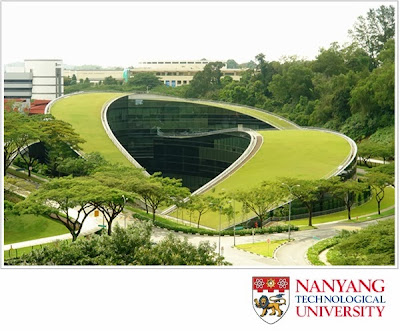Some of the most amazing architecture designs around the world in the last 5 years have focused on green architecture practices. No exception to this growing trend is the design of the School of Art, Design and Media at Nanyang Technological University in Singapore. While green home architecture styles can be seen in many a luxury property for rent in Kensington, this is one of the best examples of eco-focused design for an academic institution. The roof seems almost like a rolling meadow landscape, but it’s not purely in its aesthetic design that the school excels, but also in the 5 storeys of photovoltaic panels and natural warming solutions that make this one of the most environmentally conscious construction projects.
Green Design Trends
CPG Consultants made the focus around green architecture by making full use of the growing roof and the concrete, heavily mixed with sand, to keep the maximum amount of warmth in. The use of timber and bamboo keeps the focus on being sustainable and this trend is also prevalent in luxury property for sale in Milan and making optimal use of the environment is a design focus for the future. This green architecture project has garnered awards and sets a great standard for the civil engineers and public architects to aspire to and make sure that the future blends elements of technological design with the natural environment to produce a winning formula.
Technologically Green Design
It’s without a doubt that Singapore culture has made its mark on the design of this building. The focus is both on technology and green thinking, with the architecture becoming a perfect blend of both. In a horseshoe type loop that layers the top of the building in rolling hills of green, the edgings also work as walkways for students to traverse the various storeys of the structure. The inside glass and transparency focused structures make use of the optimum natural light and warmth factors, while offering views to faculty members and students while they go about their daily lives. There is also the use of the green rooftop structures to collect the natural rainwater to make use of cyclical structures for irrigation and natural harvest for bathrooms and other necessities. The structure forms the heart of the world’s largest engineering college and the university was also used for the Youth Olympics. Rooms are designed in the way to make the most of the odd spaces and different spaces are used for different classes to extract the maximum amount of creativity from students.Green Design Trends
CPG Consultants made the focus around green architecture by making full use of the growing roof and the concrete, heavily mixed with sand, to keep the maximum amount of warmth in. The use of timber and bamboo keeps the focus on being sustainable and this trend is also prevalent in luxury property for sale in Milan and making optimal use of the environment is a design focus for the future. This green architecture project has garnered awards and sets a great standard for the civil engineers and public architects to aspire to and make sure that the future blends elements of technological design with the natural environment to produce a winning formula.
Sarah Mancini is a keen writer with a focus on architecture and design. Through her articles she aims to educate people on green practices and the beauty of modern design working in harmony with the natural world.

Comments
Post a Comment
If you have comments, questions, or additional info to add in this post please share them here.